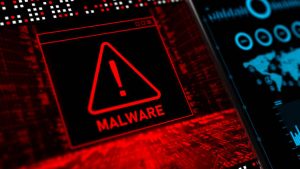In today’s interconnected world, where digital devices play an integral role in our daily lives, ensuring the security of our computers is more critical than ever. With the prevalence of viruses and malware posing constant threats to our data and privacy, it’s essential to adopt proactive measures to safeguard our devices. In this comprehensive guide, we’ll delve deep into the strategies and best practices for protecting your computer from viruses and malware, covering everything from antivirus software to safe browsing habits.
1. Understanding the Threat Landscape
Before diving into the methods of protection, it’s crucial to understand the landscape of computer viruses and malware. Viruses are malicious programs designed to infect and damage computers, while malware encompasses a broader category of malicious software, including spyware, adware, ransomware, and more. These threats can infiltrate your computer through various means, such as email attachments, infected websites, or removable storage devices.
2. Installing and Updating Antivirus Software
The first line of defense against viruses and malware is installing reputable antivirus software. Antivirus programs are designed to detect, prevent, and remove malicious software from your computer. When choosing antivirus software, opt for well-established brands like Norton, McAfee, or Bitdefender, as they offer comprehensive protection and frequent updates to combat emerging threats. It’s crucial to keep your antivirus software updated regularly to ensure it can effectively identify and neutralize the latest viruses and malware strains.
3. Regular Operating System Updates
Operating system updates play a vital role in maintaining the security of your computer. Software developers release updates and patches to address security vulnerabilities and bugs that could be exploited by cybercriminals to infiltrate your system. Make it a habit to install operating system updates promptly to bolster your computer’s defenses against potential threats. Most modern operating systems allow users to enable automatic updates, ensuring they stay protected without manual intervention.
4. Activating Firewall Protection
Firewalls act as a barrier between your computer and external threats by monitoring and controlling incoming and outgoing network traffic. By enabling firewall protection on your computer, you can block unauthorized access attempts and prevent malicious software from infiltrating your system. Most operating systems come with built-in firewalls that can be easily activated through system settings. Additionally, consider installing a dedicated hardware firewall for enhanced network security, especially for business or enterprise environments.
5. Practicing Safe Browsing Habits
Many viruses and malware infections originate from unsafe browsing habits, such as visiting malicious websites or clicking on suspicious links. To protect your computer from online threats, practice safe browsing habits:
- Only visit reputable websites that use HTTPS encryption and have a valid SSL certificate.
- Be cautious when clicking on ads or pop-ups, as they may lead to malicious websites or initiate unwanted downloads.
- Avoid downloading files from unknown or untrusted sources, as they may contain viruses or malware.
- Enable browser security features like pop-up blockers and phishing protection to further enhance your online security.
6. Exercising Caution with Email Attachments
Email attachments are a common vector for virus transmission, with cybercriminals often using phishing emails to distribute malware. Exercise caution when opening email attachments, especially if they’re from unknown or unexpected senders. Be wary of attachments with file extensions like .exe or .bat, as they’re commonly used by viruses to execute malicious code. Additionally, enable email filtering and scanning features provided by your email service provider to detect and quarantine suspicious attachments before they reach your inbox.
7. Creating Strong and Unique Passwords
Passwords are the keys to your digital kingdom, so it’s crucial to create strong and unique passwords for your computer and online accounts. Avoid using easily guessable passwords like “password123” or “123456,” as they’re susceptible to brute-force attacks. Instead, use complex passwords that include a combination of letters, numbers, and special characters. Consider using a password manager to generate and securely store your passwords, making it easier to manage and protect your credentials across multiple accounts.
8. Regular Data Backups
Despite your best efforts to protect your computer from viruses and malware, there’s always a risk of infection or data loss. That’s why regular data backups are essential for mitigating the impact of potential security breaches or system failures. Set up automated backups to external hard drives, cloud storage services, or network-attached storage (NAS) devices to ensure your important files and documents are securely backed up. In the event of a virus infection or system crash, you can restore your data from backups without losing valuable information.
9. Educating Yourself and Staying Informed
Cybersecurity is an ever-evolving field, with new threats and vulnerabilities emerging regularly. Stay informed about the latest cybersecurity trends, best practices, and security updates by following reputable sources like cybersecurity blogs, news websites, and industry reports. Educate yourself about common virus and malware threats, phishing techniques, and social engineering tactics used by cybercriminals to target unsuspecting users. By staying informed and vigilant, you can better protect yourself and your computer from potential security risks.
Conclusion
Protecting your computer from viruses and malware requires a multi-layered approach that combines proactive measures, security best practices, and user awareness. By installing and updating antivirus software, keeping your operating system and software up to date, activating firewall protection, practicing safe browsing habits, exercising caution with email attachments, creating strong passwords, regularly backing up your data, and staying informed about cybersecurity threats, you can significantly reduce the risk of your computer falling victim to viruses and malware. Remember, cybersecurity is everyone’s responsibility, and by taking proactive steps to protect your computer, you can safeguard your data, privacy, and digital assets in today’s interconnected world.

